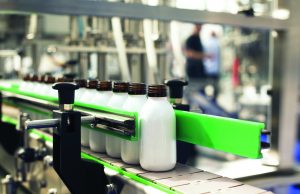 Ultra High Molecular Weight Polyethylene properties make it the preferred plastic for a variety of uses and applications. It is used in some circumstances as an improvement on the qualities that you will find in High Density Polyethylene.
Ultra High Molecular Weight Polyethylene properties make it the preferred plastic for a variety of uses and applications. It is used in some circumstances as an improvement on the qualities that you will find in High Density Polyethylene.
Ultra High Molecular Weight Polyethlyene Properties VS. HDPE Properties
UHMWPE has a higher molecular weight than its counterpart HDPE. CNC machines have an easier time machining with polyethylene material that features a higher molecular weight. With all things considered, Ultra High Molecular Weight Polyethlyene is more durable, and usually, more chemically resistant than HDPE. It is the top solution
We have UHMWPE sheet, rod, and tube in standard sizing configurations, and we are capable of custom cutting any material in the custom size for you. If you need to custom order UHMWPE, please give us a call at 1 (866) 437-7427 and one of our representatives would be glad to take the product specifications that your application requires.
UHMWPE can be ordered in the following grades: Bearing Grade, Ceramic Filled, FDA, Virgin, Glass Filled, Reprocessed, Oil Filled, Static Dissipative, UV Resistant, Anti-Skid, Flame Retardant, High Temperature, and Metal Detectable. UHMWPE Sheet can be ordered in Natural, Black, Blue and Green. UHMWPE tube can be ordered in natural, Black, Blue and Green.
Comparing UHMWPE to HDPE, Ultra High Molecular Weight Polyethylene should be secured with mechanical fasteners when you work with it, whereas HDPE prefers being joined by hot air, nitrogen or other forms of welding, rather than mechanical fastening.
Physical Properties of UHMWPE
|
UNITS |
ASTM Test |
||
|
Tensile strength @ break @ 73°F |
psi |
D638 |
3,550 – 5,800 |
|
Flexural modulus @ 73°F |
psi |
D790 |
98,300 – 222,000 |
|
Izod impact (notched) |
ft-lbs/in of notch |
D256 |
1.0 – 16 |
|
Deflection Temperature Under Load @ 264 psi |
°F |
D648 |
154 – 173 |
|
Water absorption @ 73°F – 24 hours |
% |
D570 |
<0.01 |
|
Coefficient of linear thermal expansion (CLTE) |
(in/in°F) |
D696 |
6.8E-5 to 7.8E-5 |
|
Coefficient of friction |
D1894 |
0.08 – 0.2 |
*Technical Data is provided courtesy of UL Prospector (www.ulprospector.com) and IAPD (www.IAPD.org).
Data is to be considered representative and is provided for guidance only. All product performance must be verified by the user under actual application conditions.